MP Board Solutions for Class 10 Geography Chapter 7 – Lifelines of National Economy
MP Board Solutions for Class 10 Geography Chapter 7 – Lifelines of National Economy are essential for understanding India’s transport and communication systems in the MPBSE curriculum. These well-structured answers help students grasp topics like roadways, railways, airways, waterways, and trade. Designed as per the latest syllabus, these solutions strengthen conceptual clarity and improve exam preparation. Ideal for revision and practice, they highlight the role of infrastructure in national growth, making them a valuable study tool for scoring well in Class 10 Social Science exams.
MP Board Solutions For Class 10 Geography – Lifelines of National Economy – Exercise Images
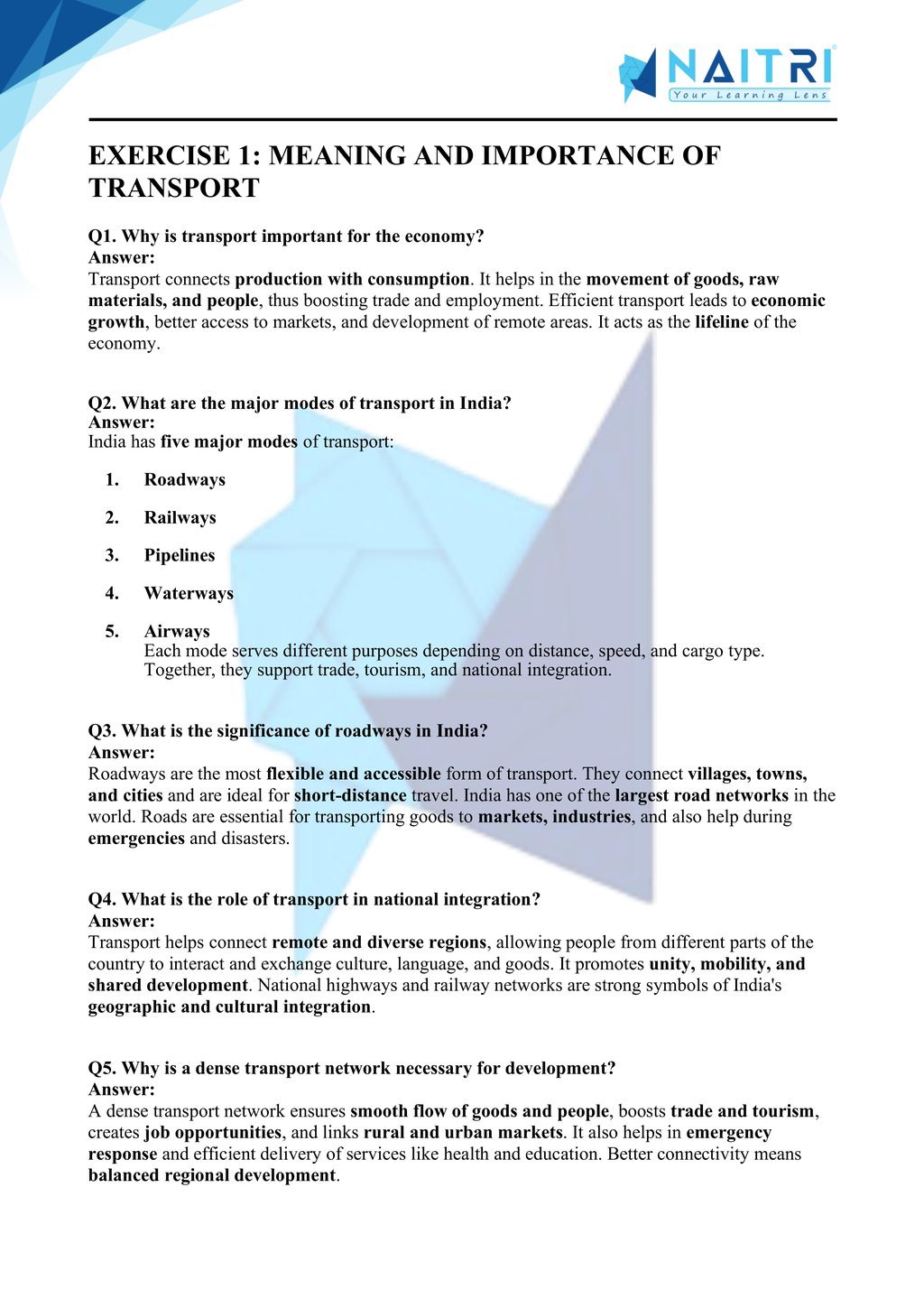
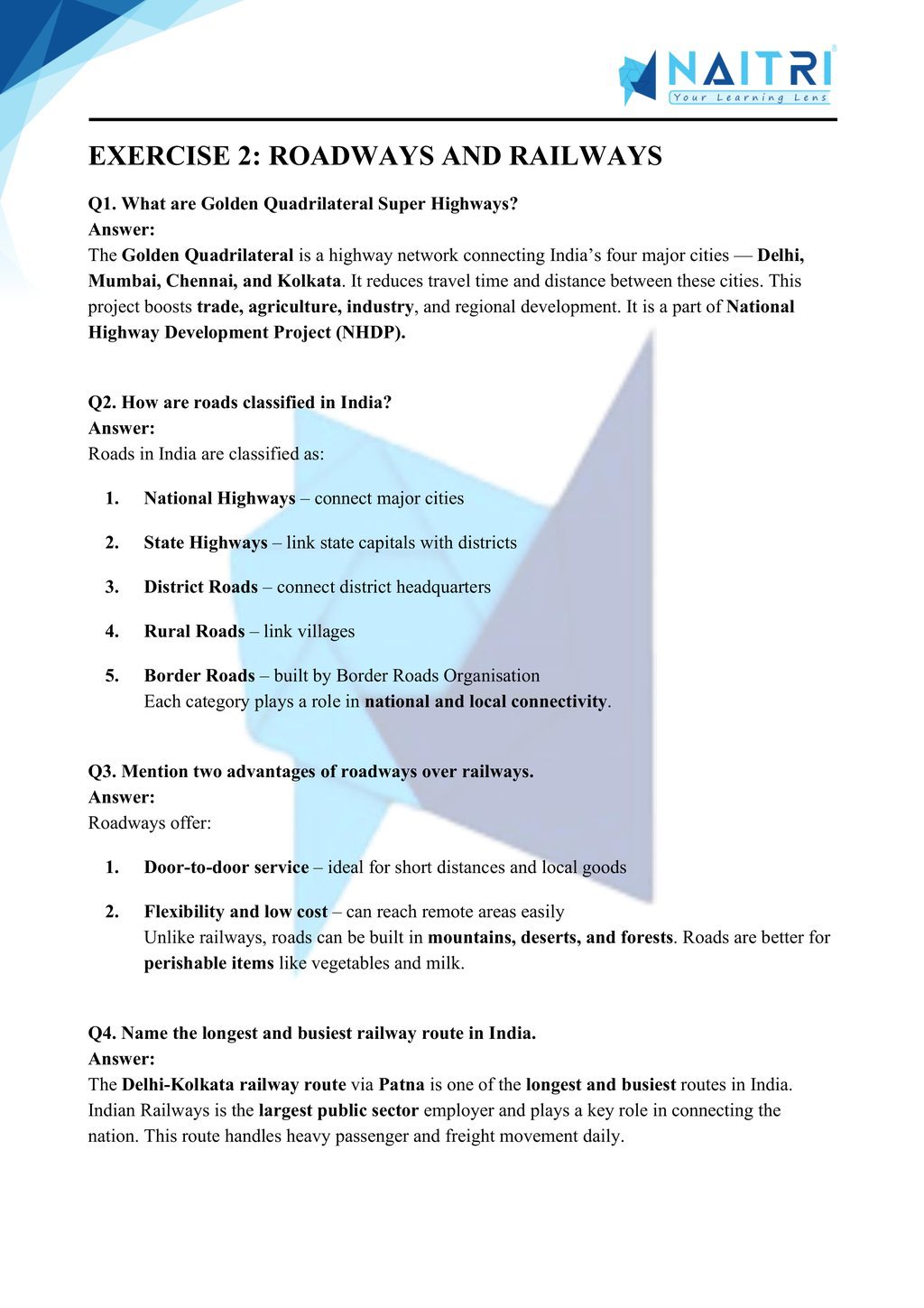
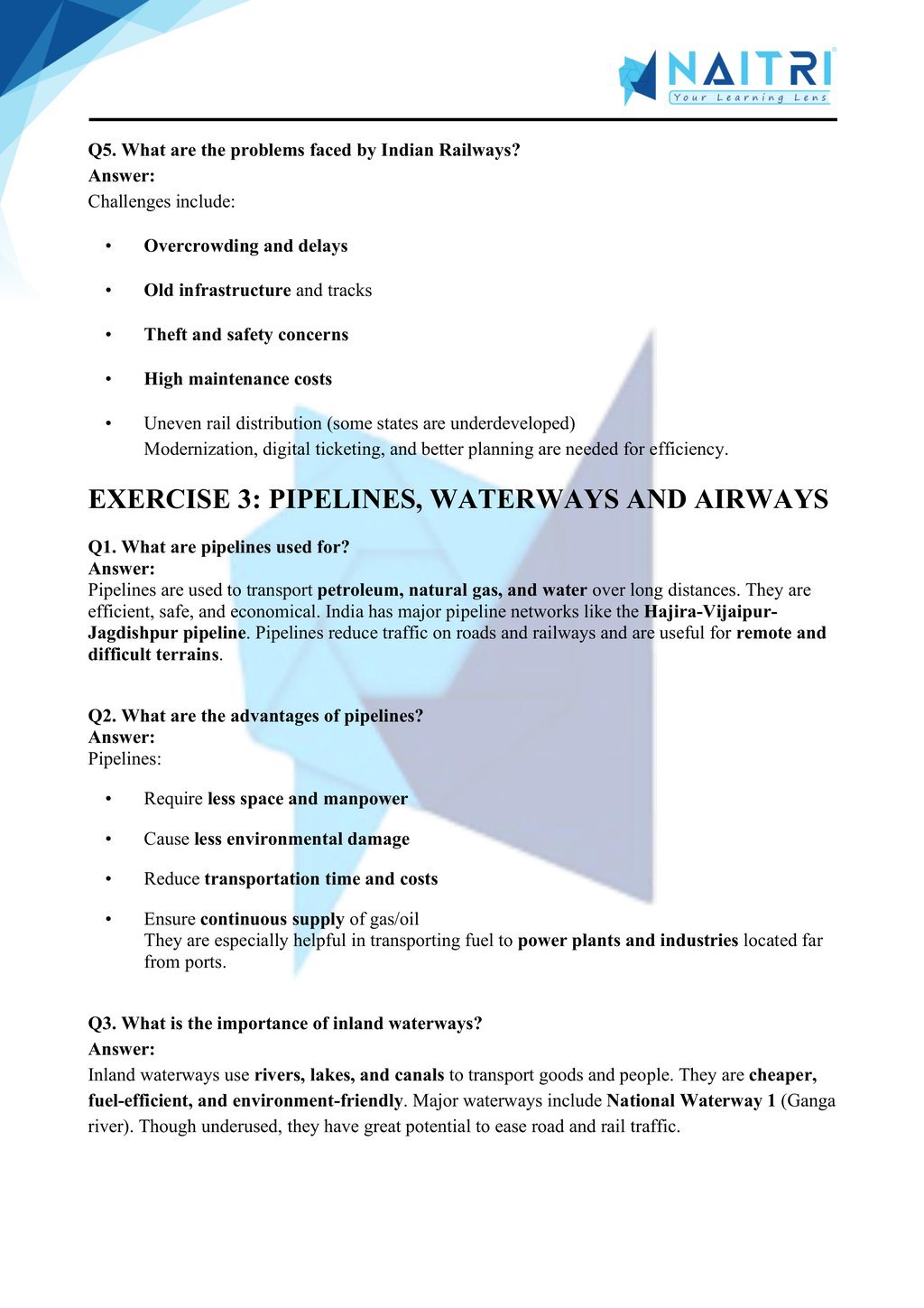
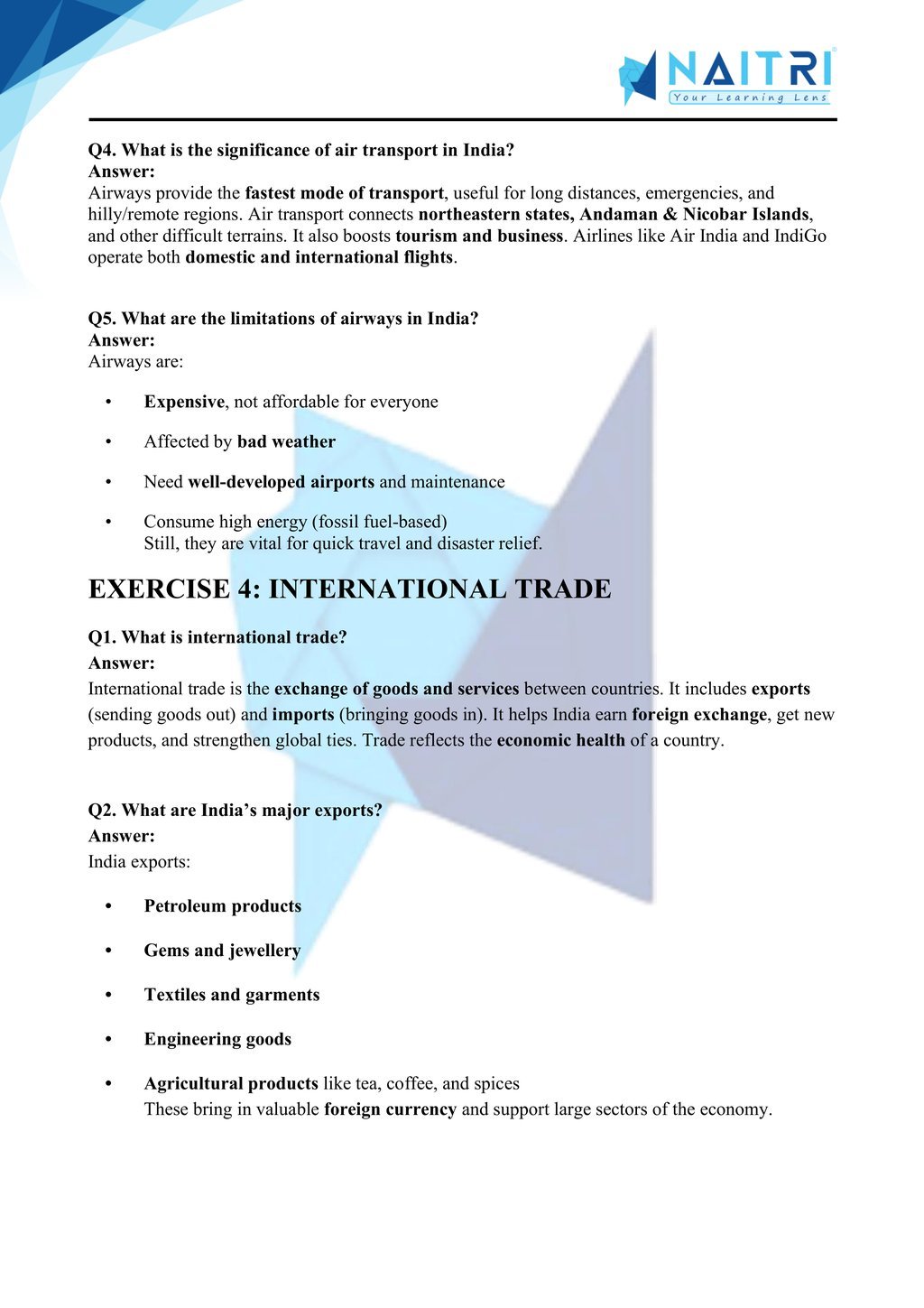
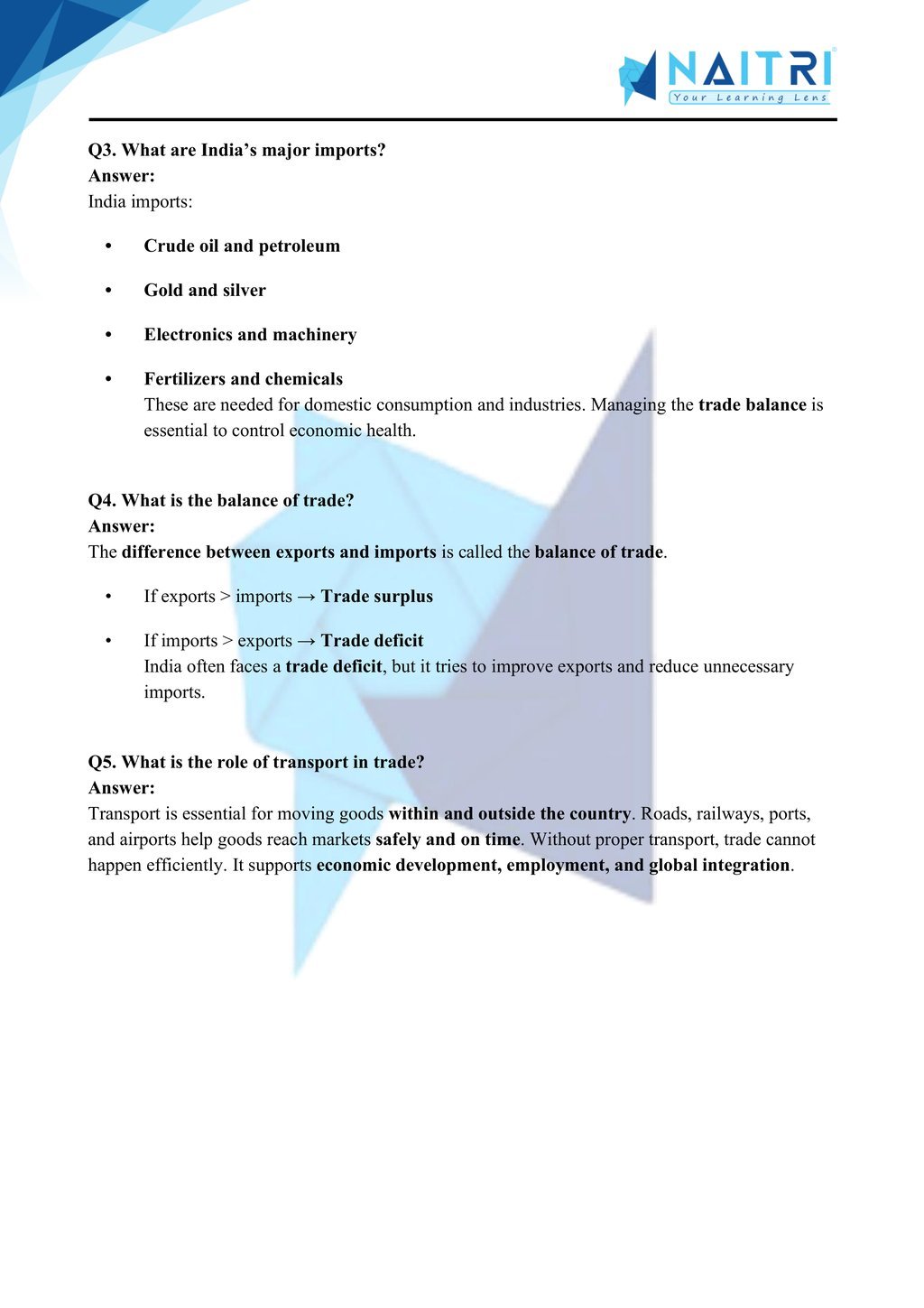
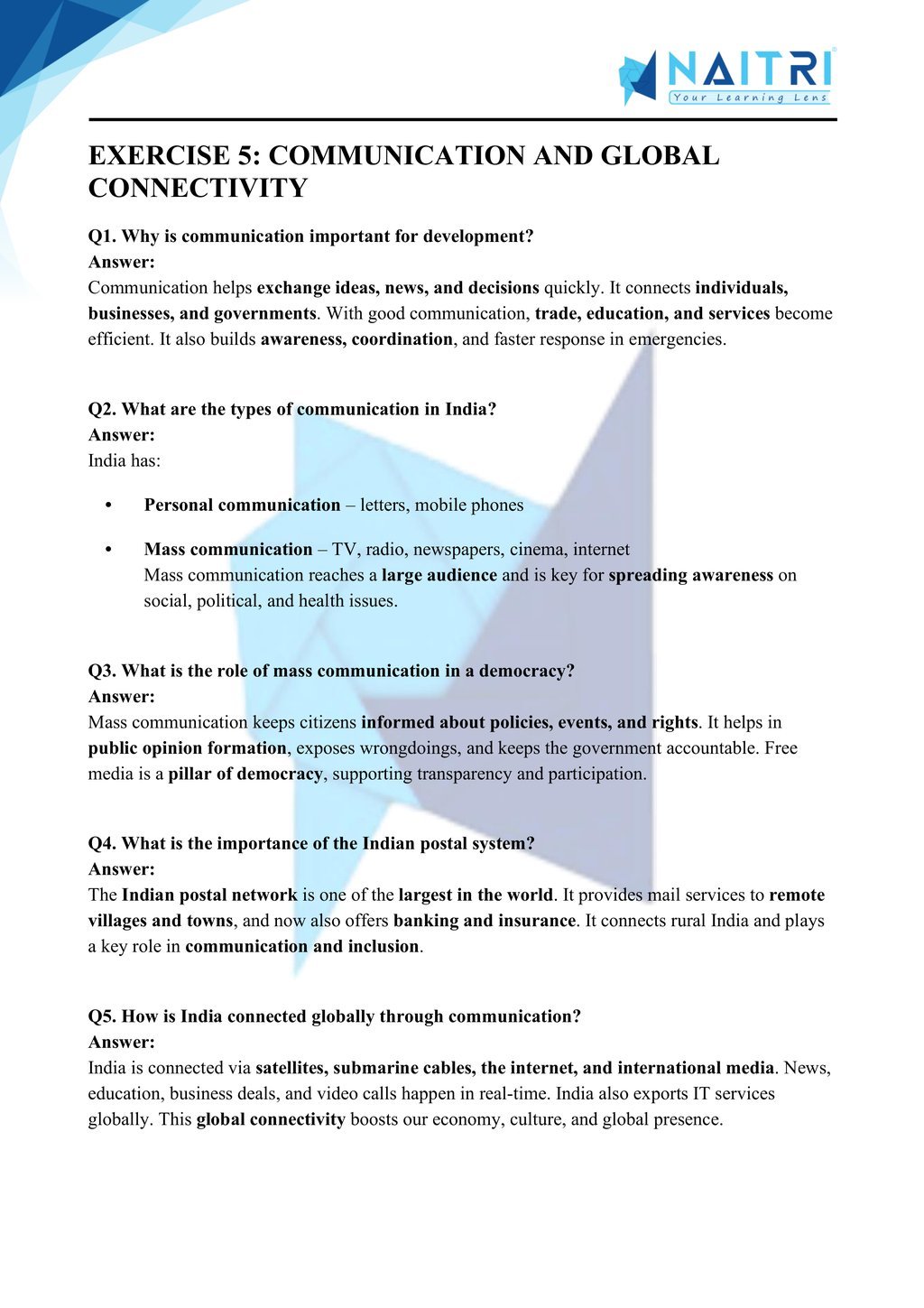
Experience Geography Like Never Before – With AR!
Understanding Lifelines of National Economy is now more exciting and immersive! With the NAITRI App, you can explore complex geography concepts through Augmented Reality (AR). Watch transport networks grow, trade routes form, and communication systems connect the country — right in front of you. Our AR-powered lessons make learning interactive, 3D, and fun, helping you retain concepts better and enjoy every topic.



Visualize . Interact . Understand . The future of learning is here
Lifelines of National Economy – Important Questions with Answers
1. Why are transport and communication called lifelines of the economy?
Answer: They help in connecting people and goods across regions, promote trade, tourism, and integrate national and global economies, supporting all economic activities.
2. What are the major means of transport in India?
Answer: The major means include roadways, railways, pipelines, waterways, and airways. Each serves different areas based on cost, speed, and terrain.
3. What is the significance of roadways in India?
Answer: Roads provide door-to-door service, are suitable for short and medium distances, and connect villages, towns, and remote areas where railways can’t reach.
4. What is the Golden Quadrilateral?
Answer: It is a network of highways connecting Delhi, Mumbai, Chennai, and Kolkata, facilitating fast movement of goods and passengers across major cities.
5. Mention two types of roads in India.
Answer:
National Highways: Connect major cities and are maintained by the central government.
State Highways: Connect state capitals and are maintained by state governments.
6. Why are railways important in India?
Answer: Railways are ideal for long-distance transport, carrying bulk goods and passengers, and play a crucial role in economic integration and trade.
7. What are the challenges faced by Indian railways?
Answer: Challenges include old tracks, overcrowding, accidents, high maintenance cost, and delays due to congestion and outdated infrastructure.
8. What are pipelines used for?
Answer: Pipelines are used to transport petroleum, natural gas, and water over long distances. They are safe, efficient, and reduce road congestion.
9. What is the importance of inland waterways in India?
Answer: Inland waterways are cheaper and eco-friendly means of transport, suitable for heavy and bulky goods, especially on rivers and canals.
10. Name any two major inland waterways in India.
Answer:
National Waterway 1: Ganga River (Allahabad to Haldia)
National Waterway 2: Brahmaputra River (Sadiya to Dhubri)
11. Why is air transport important?
Answer: Air transport is the fastest mode, ideal for remote, mountainous areas, emergencies, and connecting India with global destinations.
12. Name the two types of air transport in India.
Answer:
Domestic Airlines: Operate within the country (e.g., IndiGo, Air India).
International Airlines: Connect India with other countries (e.g., Emirates, Lufthansa).
13. What is communication and its importance?
Answer: Communication is the exchange of ideas and information. It plays a key role in decision-making, governance, trade, education, and maintaining social ties.
14. What is mass communication?
Answer: Mass communication is used to convey messages to a large audience via TV, radio, newspapers, and the internet, useful for public awareness.
15. Name two means of personal communication.
Answer:
Letters (India Post)
Mobile phones (calls, SMS, apps)
16. What is the role of the Indian postal system?
Answer: It is the largest postal network in the world, offering services like letters, parcels, speed post, savings schemes, and money transfers.
17. Why is the internet important today?
Answer: The internet allows instant global communication, access to information, e-commerce, education, and supports various sectors like banking, health, and business.
18. What is the role of trade in the economy?
Answer: Trade promotes exchange of goods, employment, foreign exchange, and strengthens ties between regions and countries, leading to economic growth.
19. Differentiate between internal and international trade.
Answer:
Internal trade occurs within the country.
International trade involves exchange between two or more countries.
20. What are India’s major exports?
Answer: Major exports include agricultural products (tea, spices), textiles, gems and jewellery, software, chemicals, and engineering goods.
21. What are India’s major imports?
Answer: Imports include crude oil, gold, electronics, machinery, and fertilizers that support energy needs and industrial growth.
22. What is balance of trade?
Answer: It is the difference between the value of exports and imports. A positive balance indicates more exports; a negative means more imports.
23. What is tourism and why is it important?
Answer: Tourism is travel for leisure, education, or business. It generates revenue, employment, cultural exchange, and promotes national integration and development.
24. Name two major foreign tourist attractions in India.
Answer:
Taj Mahal (Agra)
Goa beaches
25. How can India improve its transport and communication sector?
Answer: By modernizing infrastructure, investing in smart transport systems, expanding rural connectivity, and adopting digital technology for efficient communication.
Lifelines of National Economy explains the importance of transport and communication systems in connecting different parts of the country and boosting trade. The chapter discusses modes like roadways, railways, waterways, and airways, along with digital communication and international trade. It emphasizes how an efficient transport network supports economic integration, development, and globalization.
Download Naitri App
Easy, Visual Learning — Right on Your Phone
Learn with Augmented Reality! The Naitri app makes CBSE and MP Board concepts interactive and fun — even in low-resource settings. Watch lessons, complete homework, take tests, and track progress — all in one place. Anytime. Anywhere.
Available on








